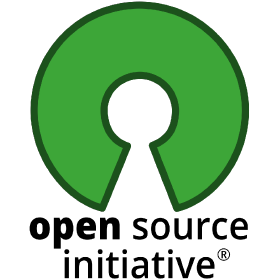 Unfortunately, good code won't speak for itself. Even the most elegantly designed and well-written codebase that solves the most pressing problem in the world won't just get adopted on its own. You, the open source creator, need to speak for your code and breathe life into your creation. That's where technical writing and documentation come in. A project's documentation gets the most amount of traffic, by far. It's the place where people decide whether to continue learning about your project or move on. Thus, spending time and energy on documentation and technical writing, focusing on the most important section, "Getting Started," will do wonders for your project's traction.
Unfortunately, good code won't speak for itself. Even the most elegantly designed and well-written codebase that solves the most pressing problem in the world won't just get adopted on its own. You, the open source creator, need to speak for your code and breathe life into your creation. That's where technical writing and documentation come in. A project's documentation gets the most amount of traffic, by far. It's the place where people decide whether to continue learning about your project or move on. Thus, spending time and energy on documentation and technical writing, focusing on the most important section, "Getting Started," will do wonders for your project's traction.
OSS Capital
See the following -
3 Metrics To Measure Your Open Source Community Health
 Community building is table stakes in the success of any open source project. Even outside of open source, community is considered a competitive advantage for businesses in many industries—from retail, to gaming, to fitness. (For a deeper dive, see "When community becomes your competitive advantage" in the Harvard Business Review.) However, open source community building—especially offline activities—is notoriously hard to measure, track, and analyze. While we've all been to our fair share of meetups, conferences, and "summits" (and probably hosted a few of them ourselves), were they worth it? Did the community meaningfully grow? Was printing all those stickers and swags worth the money? Did we collect and track the right numbers to measure progress? To develop a better framework for measuring community, we can look to a different industry for guidance and fresh ideas: political campaigns.
Community building is table stakes in the success of any open source project. Even outside of open source, community is considered a competitive advantage for businesses in many industries—from retail, to gaming, to fitness. (For a deeper dive, see "When community becomes your competitive advantage" in the Harvard Business Review.) However, open source community building—especially offline activities—is notoriously hard to measure, track, and analyze. While we've all been to our fair share of meetups, conferences, and "summits" (and probably hosted a few of them ourselves), were they worth it? Did the community meaningfully grow? Was printing all those stickers and swags worth the money? Did we collect and track the right numbers to measure progress? To develop a better framework for measuring community, we can look to a different industry for guidance and fresh ideas: political campaigns.
- Login to post comments
3 Steps For Product Marketing Your Open Source Project
 Product marketing for COSS is materially different from product marketing for proprietary software and from general marketing practices like ads, lead generation, sponsorships, booths at conferences and trade shows, etc. Because the source code is open for all to see and the project's evolutionary history is completely transparent, you need to articulate—from a technical level to a technical audience—how and why your project works. Using the word "marketing" in this context is, in fact, misleading. It's really about product education. Your role is more like a coach, mentor, or teaching assistant in a computer science class or a code bootcamp than a "marketing person."
Product marketing for COSS is materially different from product marketing for proprietary software and from general marketing practices like ads, lead generation, sponsorships, booths at conferences and trade shows, etc. Because the source code is open for all to see and the project's evolutionary history is completely transparent, you need to articulate—from a technical level to a technical audience—how and why your project works. Using the word "marketing" in this context is, in fact, misleading. It's really about product education. Your role is more like a coach, mentor, or teaching assistant in a computer science class or a code bootcamp than a "marketing person."
- Login to post comments
A Framework For Building Products From Open Source Projects
 If your experience with technology resembles mine in any way, you know intuitively that the projects we DIY are not the same as the products we spend money buying. This isn't a new observation in the open source community...Sarah Novotny, who led the Kubernetes community and was heavily involved in the Nginx and MySQL communities, emphatically articulated at the inaugural Open Core Summit that the open source project a company shepherds and the product that a company sells are two completely different things. Yet, project and product continue to be conflated by maintainers-turned-founders of commercial open source software (COSS) companies, especially (and ironically) when the open source project gets traction. This mistake gets repeated, I believe, because it's hard to mentally conceptualize how and why a commercial product should be different when the open source project is already being used widely.
If your experience with technology resembles mine in any way, you know intuitively that the projects we DIY are not the same as the products we spend money buying. This isn't a new observation in the open source community...Sarah Novotny, who led the Kubernetes community and was heavily involved in the Nginx and MySQL communities, emphatically articulated at the inaugural Open Core Summit that the open source project a company shepherds and the product that a company sells are two completely different things. Yet, project and product continue to be conflated by maintainers-turned-founders of commercial open source software (COSS) companies, especially (and ironically) when the open source project gets traction. This mistake gets repeated, I believe, because it's hard to mentally conceptualize how and why a commercial product should be different when the open source project is already being used widely.
- Login to post comments
Driving The Global Conversation About “Open Source Artificial Intelligence”
 The Open Source Initiative (OSI) continues the work of exploring complexities surrounding the development and use of artificial intelligence in Deep Dive: AI – Defining Open Source AI, with the goal of collaboratively establishing a clear and defensible definition of “Open Source AI.” OSI is bringing together global experts to establish a shared set of principles that can recreate a permissionless, pragmatic and simplified collaboration for AI practitioners, similar to what the Open Source Definition has done.
The Open Source Initiative (OSI) continues the work of exploring complexities surrounding the development and use of artificial intelligence in Deep Dive: AI – Defining Open Source AI, with the goal of collaboratively establishing a clear and defensible definition of “Open Source AI.” OSI is bringing together global experts to establish a shared set of principles that can recreate a permissionless, pragmatic and simplified collaboration for AI practitioners, similar to what the Open Source Definition has done.
- Login to post comments
How To Write Effective Documentation For Your Open Source Project
- Login to post comments
Improve Open Source Community Sustainability By Tracking These Two Metrics
 In early 2020, I wrote an article on three metrics for tracking and measuring offline, in-person community-building activities. Little did I (or the world) know then that offline, in-person activities of any kind would soon become unfeasible for the foreseeable future. So, I started thinking: With open source projects being online by default, and with everything else moving online and virtual, what should creators of open source technologies measure as we continue in this COVID and (hopefully soon) post-COVID world? There are plenty of metrics you can track—stars, forks, pull requests (PRs), merge requests (MRs), contributor counts, etc.—but more data doesn't necessarily mean clearer insights. I've previously shared my skepticism about the value of these surface-level metrics, especially when assessing an open source project's health and sustainability. In this article, I propose two second-order metrics to track, measure, and continually optimize to build a strong, self-sustaining open source community...
In early 2020, I wrote an article on three metrics for tracking and measuring offline, in-person community-building activities. Little did I (or the world) know then that offline, in-person activities of any kind would soon become unfeasible for the foreseeable future. So, I started thinking: With open source projects being online by default, and with everything else moving online and virtual, what should creators of open source technologies measure as we continue in this COVID and (hopefully soon) post-COVID world? There are plenty of metrics you can track—stars, forks, pull requests (PRs), merge requests (MRs), contributor counts, etc.—but more data doesn't necessarily mean clearer insights. I've previously shared my skepticism about the value of these surface-level metrics, especially when assessing an open source project's health and sustainability. In this article, I propose two second-order metrics to track, measure, and continually optimize to build a strong, self-sustaining open source community...
- Login to post comments
Open Source Goes Corporate: Can Open Healthcare Be Far Behind?
 If you aren't in IT, you may have missed the news that IBM is acquiring Red Hat, a leader in the open source Linux movement, or that, a couple days prior, Microsoft closed on its acquisition of GitHub, a leader in open source software development. Earlier this year Salesforce acquired Mulesoft, and Cloudera and Hortonworks merged; all were other open source leaders. I must confess, I had never heard of some of these companies, but I'm starting to believe what MarketWatch said following the IBM announcement: "open source has truly arrived." What exactly that means, especially for healthcare, I'm not sure, but it's worth exploring. IBM is paying $34b for Red Hat.
If you aren't in IT, you may have missed the news that IBM is acquiring Red Hat, a leader in the open source Linux movement, or that, a couple days prior, Microsoft closed on its acquisition of GitHub, a leader in open source software development. Earlier this year Salesforce acquired Mulesoft, and Cloudera and Hortonworks merged; all were other open source leaders. I must confess, I had never heard of some of these companies, but I'm starting to believe what MarketWatch said following the IBM announcement: "open source has truly arrived." What exactly that means, especially for healthcare, I'm not sure, but it's worth exploring. IBM is paying $34b for Red Hat.
- Login to post comments
Open Source Initiative Hosts 2nd Deep Dive AI Event, Aims to Define ‘Open Source’ for AI
 Open Source Initiative (OSI), the non-profit corporation that educates about and advocates for the importance of non-proprietary software, is hosting its 2nd Deep Dive: AI event, this one focused on Defining Open Source AI. The goal is to work toward establishing a clear and defendable definition of “Open Source AI.” OSI is bringing together global experts to establish a shared set of principles that can recreate a permissionless, pragmatic and simplified collaboration for AI practitioners, similar to what the Open Source Definition has done.
Open Source Initiative (OSI), the non-profit corporation that educates about and advocates for the importance of non-proprietary software, is hosting its 2nd Deep Dive: AI event, this one focused on Defining Open Source AI. The goal is to work toward establishing a clear and defendable definition of “Open Source AI.” OSI is bringing together global experts to establish a shared set of principles that can recreate a permissionless, pragmatic and simplified collaboration for AI practitioners, similar to what the Open Source Definition has done.
- Login to post comments
To Trust Artificial Intelligence, It Must Be Open And Transparent. Period.
 Machine learning has been around for a long time. But in late 2022, recent advancements in deep learning and large language models started to change the game and come into the public eye. And people started thinking, “We love Open Source software, so, let’s have Open Source AI, too.” But what is Open Source AI? And the answer is: we don’t know yet. Machine learning models are not software. Software is written by humans, like me. Machine learning models are trained; they learn on their own automatically, based on the input data provided by humans. When programmers want to fix a computer program, they know what they need: the source code. But if you want to fix a model, you need a lot more: software to train it, data to train it, a plan for training it, and so forth. It is much more complex. And reproducing it exactly ranges from difficult to nearly impossible.
Machine learning has been around for a long time. But in late 2022, recent advancements in deep learning and large language models started to change the game and come into the public eye. And people started thinking, “We love Open Source software, so, let’s have Open Source AI, too.” But what is Open Source AI? And the answer is: we don’t know yet. Machine learning models are not software. Software is written by humans, like me. Machine learning models are trained; they learn on their own automatically, based on the input data provided by humans. When programmers want to fix a computer program, they know what they need: the source code. But if you want to fix a model, you need a lot more: software to train it, data to train it, a plan for training it, and so forth. It is much more complex. And reproducing it exactly ranges from difficult to nearly impossible.
- Login to post comments
2nd Deep Dive Event: Defining Open Source Artificial Intelligence
Open Source Initiative (OSI), the non-profit corporation that educates about and advocates for the importance of non-proprietary software, is hosting its 2nd Deep Dive: AI event, this one focused on Defining Open Source AI. The goal is to work toward establishing a clear and defendable definition of “Open Source AI.” OSI is bringing together global experts to establish a shared set of principles that can recreate a permissionless, pragmatic and simplified collaboration for AI practitioners, similar to what the Open Source Definition has done. OSI is the steward of the Open Source Definition, which serves as the foundation of the modern software ecosystem, outlining the distribution terms of Open Source software. OSI also maintains a list of OSI Approved Licenses that have become a nexus of trust around which developers, users, corporations and governments can organize Open Source cooperation.
 “It’s time to define what ‘open’ means in AI before it is defined by accident,” said Stefano Maffulli, executive director of OSI. “This milestone project is essential right now. Policymakers, re-users and modifiers are confused, and developers aren’t clear on data sharing and transparency. A permission structure is needed to help fight open washing.”
“It’s time to define what ‘open’ means in AI before it is defined by accident,” said Stefano Maffulli, executive director of OSI. “This milestone project is essential right now. Policymakers, re-users and modifiers are confused, and developers aren’t clear on data sharing and transparency. A permission structure is needed to help fight open washing.”
- Login to post comments